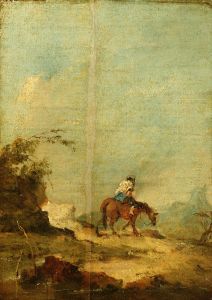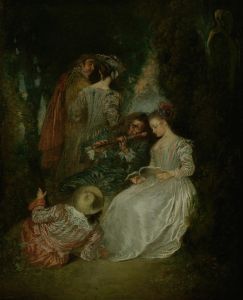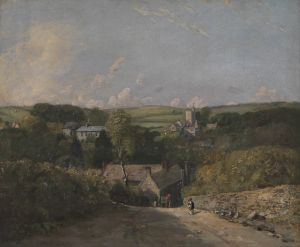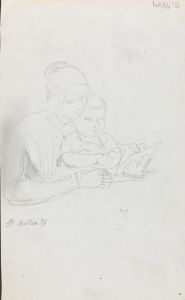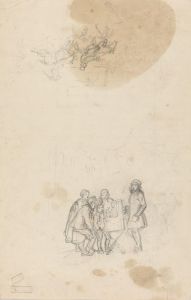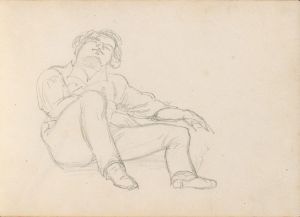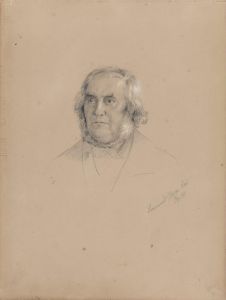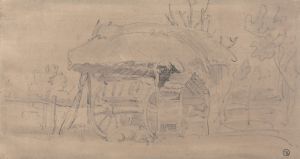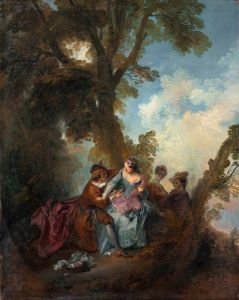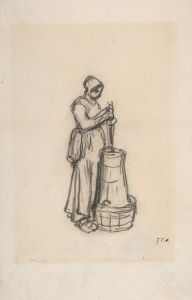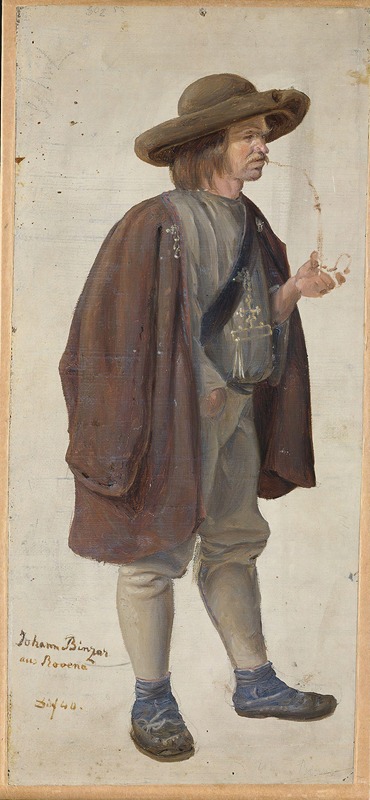
German Farmer
A hand-painted replica of Adolph Tidemand’s masterpiece German Farmer, meticulously crafted by professional artists to capture the true essence of the original. Each piece is created with museum-quality canvas and rare mineral pigments, carefully painted by experienced artists with delicate brushstrokes and rich, layered colors to perfectly recreate the texture of the original artwork. Unlike machine-printed reproductions, this hand-painted version brings the painting to life, infused with the artist’s emotions and skill in every stroke. Whether for personal collection or home decoration, it instantly elevates the artistic atmosphere of any space.
Adolph Tidemand was a prominent Norwegian painter in the 19th century, known for his detailed and realistic depictions of Norwegian rural life and folk culture. One of his notable works is "German Farmer," which reflects his interest in capturing the essence of everyday life and the cultural exchanges between different regions.
"German Farmer" was painted during a period when Tidemand was exploring themes of rural life and the cultural identity of various European communities. Although Tidemand is primarily celebrated for his focus on Norwegian subjects, this painting stands out as an example of his broader interest in the lives of people beyond Norway's borders. The painting showcases Tidemand's skill in portraying the dignity and character of rural individuals, a common theme in his body of work.
Adolph Tidemand was born on August 14, 1814, in Mandal, Norway. He studied at the Academy of Art in Copenhagen and later at the Academy of Fine Arts in Düsseldorf, Germany. The Düsseldorf school of painting, known for its detailed and realistic style, greatly influenced Tidemand's artistic development. His time in Germany exposed him to a variety of artistic influences and subjects, which is reflected in works like "German Farmer."
The painting itself is characterized by Tidemand's meticulous attention to detail and his ability to convey the personality and environment of his subjects. While specific details about the painting's composition and the identity of the farmer depicted are not widely documented, Tidemand's works typically feature a strong sense of narrative and an emphasis on the cultural and social context of the subjects.
Tidemand's interest in rural life and cultural identity was part of a broader 19th-century European trend where artists sought to document and preserve the traditional ways of life that were rapidly changing due to industrialization and modernization. His paintings often served as a visual record of the customs, costumes, and daily activities of rural communities, making them valuable historical documents as well as works of art.
Throughout his career, Tidemand received numerous accolades and his works were exhibited widely, contributing to his reputation as one of Norway's foremost painters. His collaboration with fellow artist Hans Gude on several large-scale paintings further solidified his status in the art world. Tidemand's legacy continues to be celebrated in Norway and beyond, with his works held in major collections, including the National Gallery in Oslo.
In summary, "German Farmer" by Adolph Tidemand is a testament to the artist's dedication to capturing the essence of rural life and cultural identity. While specific details about the painting are limited, it remains an important part of Tidemand's oeuvre, reflecting his broader interest in the lives of people across different regions and his commitment to documenting the human experience through art.





